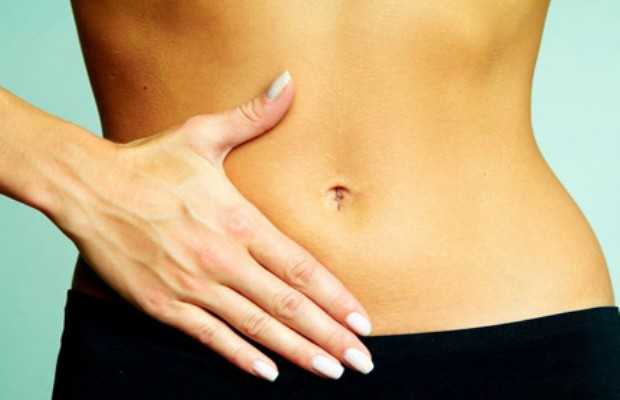Fibroids are the lumps of tissues found to develop in the uterus often related with miscarriages and infertility. Fibroids are benign growth that affects women mainly in their fertile years. More than 50% women across globe suffers from uterine Fibroid.

Today uterine fibroid is one of the leading health concerns across the world. About 50% of women around the globe suffer from uterine fibroid. Uterine Fibroid is undoubtedly one of the important reasons of hysterectomy. In other words uterine fibroid are more common than you think and most the time women realize this problem during pregnancy.
What is a Uterine Fibroid?
Uterine fibroid or leiomyomata is a benign non-cancerous growth developing from the uterine wall. It can either be embedded in the wall or may even protrude out of the wall of the uterus. Uterine fibroid is also known as fibromyoma, myoma or fibroids.
The uterine fibroid may be single or may occur in clusters.
Cause of Uterine Fibroid
Though the exact causes of the fibroids, uterine fibroid are unknown still some of the common causes of uterine fibroid are listed below:
1. Genetic: Fibroid is known to have genetic transmission; they are known to run in families.
2. Ethnicity: African ladies are known to have three times more tendency to develop fibroid in comparison to other women.
3. Estrogen: Estrogen hormone is directly concerned with the fibroid development. It is seen that the tendency to have fibroid diminishes significantly with menopause.
Some of the factors that are seen to occur with uterine fibroid are listed below:
- Obesity
- Nulliparity or women who have never been pregnant
- Onset of periods before the age of 10 years
Types of Uterine Fibroid
Uterine Fibroid are classified by the place where they grow:
- Myometrial( Intramural) – these uterine fibroid develop in uterine muscular wall
- Submucosal – these uterine fibroid develop under the uterine wall
- Subserosal – these uterine fibroid grow outside the uterine wall
- Pedunculated – these uterine fibroid develop outside the uterine wall, hanging from the wall in the uterine cavity by a stalk
Symptoms of Uterine Fibroid
- Frequent bleeding from the uterus in between the periods
- Heavy periods (menorrhagia)
- Periods may last longer than normal
- Increased tendency to pass urine
- Dyspareunia or pain and discomfort during intercourse
- Heaviness or fullness sensation of the abdomen
- Low back ache
- Spontaneous abortion
- Pain in lower abdomen
Treatments of Uterine Fibroid
Watchful Waiting
Oftentimes it is seen that a woman experience no sign or symptom. Bleeding or abdominal pain is the first sign of fibroid. In such a situation expectant treatment is the best thing to do. Watchful waiting till symptoms appears to be done.
Medications
Medical Treatments Of Uterine Fibroid
To regulate the hormones affecting the growth and development of fibroids medications can be effectively used. The drugs do not remove or destroy the fibroid but may cause the shrinkage or uterine fibroid.
Important medications for uterine fibroid are as under:
Gonadotropin releasing hormone (GnRH) agonists – Drugs like Lupron. Synarel etc. are used to treat fibroids by lowering natural estrogen-progesterone levels. Due to this menstruation ceases and bleeding stops and anemia gets corrected. Some ladies may experience hot flashes with such drugs.
Progestin relaesing intrauterine devices (IUD) – Such devices may control bleeding and pain caused by uterine fibroid. It also causes shrinkage of fibroids.
Androgens – Danazol and similar medicines may ceases menstruation completely. This drug controls menses, reduces the size of the fibroid and the uterus. It controls uterine bleeding.
This drug is rarely used to treat uterine fibroid owing to its unwanted adverse effects. Excessive weight gain, dysphoria (feeling depressed, anxious), unwanted hair growth, acne headache and a deep hoarse voice are some of the common side effects seen with danazol.
Other Medications – Drugs like oral contraceptives or progestins are effective in controlling bleeding. They do not reduce the size of the fibroid but relive pain cause by fibroids.
Surgical Treatments Of Uterine Fibroid
Hysterectomy – If the condition does not improve by medical management, hysterectomy or the removal of uterus is the choice of treatment. If a woman’s family is complete then hysterectomy may be done.
Myomectomy – In this procedure the surgeon removes the fibroid but leaves the uterus intact. The probability of recurrence of uterine fibroid still remains in this technique.
You may also be interested in reading more about Uterine Fibroid, Fibroids Treatment, Intramural Fibroid, Uterus Fibroids, Fibroid, Treatment of Fibroid Uterus, Myomas, Multiple Uterine Fibroids and MRgFUS. We will be writing expert tips on all of these in short time.
We would love to hear your experiences of battling with Uterine Fibroid, please leave us a comment and let us know your own tips you followed during the course of uterine fibroid problem. Subscribe our RSS to receive latest pregnancy, uterine fibroid and health updates.






















